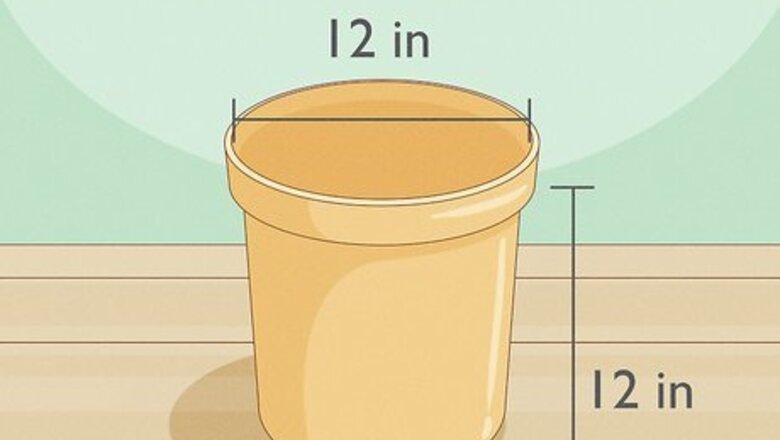
views
Planting the Ginger
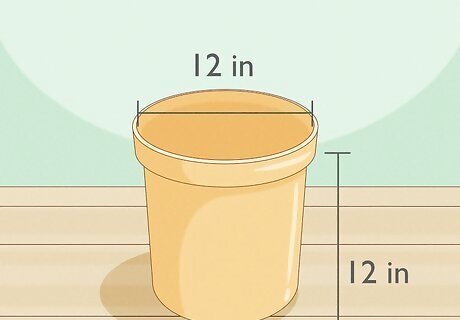
Choose a wide, shallow pot. For a ginger plant, it’s best to use a wide, fairly shallow pot. That’s because the plant’s roots grow horizontally rather than vertically. A pot that's approximately 12-inches (30-cm) wide and 12-inches (30-cm) deep is usually a good option for ginger. Make the pot deeper if you are putting gravel in the bottom for better drainage. Make sure that your pot also has good drainage holes, so the roots don’t become waterlogged. You should have a fairly deep saucer to place underneath the pot to catch the water that drains.
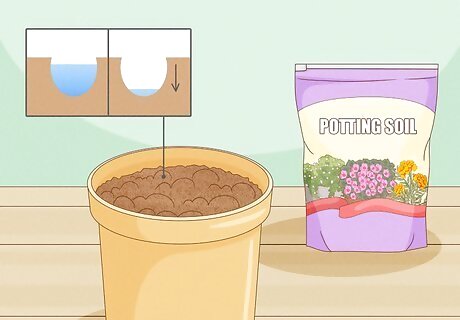
Fill the pot with well-draining soil. Once you’ve selected your pot, add potting soil to it. It’s important to choose a soil that drains well so the ginger’s roots remain healthy. Look for a potting soil that contains sand, which provides air space that helps the water drain out more easily. Perlite and vermiculite also help create air space for better drainage, so you can use soil mixes that contains those ingredients as well. An all-purpose soil-free mix is also good for ginger plants because it contains a high amount of organic material, such as peat, but also features sand, perlite, vermiculite, or a combination of all three that helps the soil drain effectively.
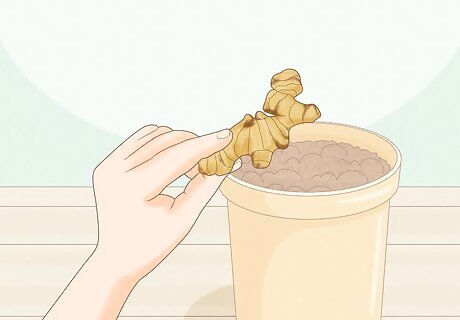
Select a healthy, living ginger root. To grow ginger in a container indoors, you need a living ginger root. You can purchase one from a garden supply store, nursery, or seed company. If you have a friend or neighbor with a ginger plant, you can also ask for a root cutting. Make sure that the ginger root that you choose is plump and firm. Its skin should be tight with several eye buds on it. Eye buds are similar to the eyes that you’d find on potato.

Soak the root overnight. When you’ve gotten a ginger root, fill a small bowl with warm water. Place the root in the water, and allow it to soak for at least 8 hours or overnight. Soaking the root helps stimulate germination, which is particularly important if you’re using a store-bought root.
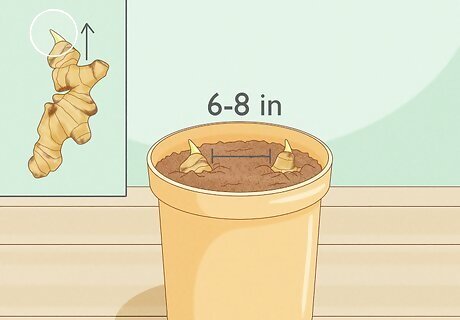
Set the root in the soil with the eye buds facing upwards. After you’ve filled your pot, stick the ginger root in the soil. Make sure that the root’s eye buds are pointing upwards when you set it in the pot. If you’re planting more than one root in your pot, you should place them at least 6- to 8-inches (15- to 20-cm) apart so they have adequate room to grow.
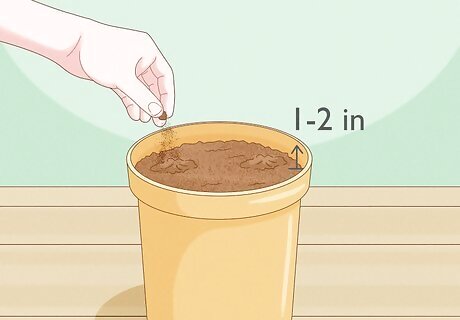
Cover the root with soil. When the root is in the pot, place 1- to 2-inches (2.5- to 5-cm) of soil over it. The entire root should be covered by the soil.
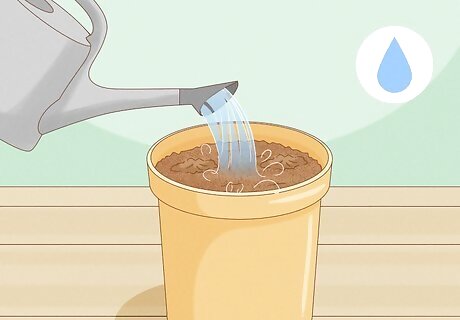
Water the root well. You want to ensure that the root has sufficient water to grow. Fill a watering can with water and add enough water to the soil to thoroughly wet it. While you want the soil to be watered well, you don’t want to oversaturate it. Make sure that all of the water is fully absorbed so there aren’t any puddles on the surface.
Caring for the Growing Ginger
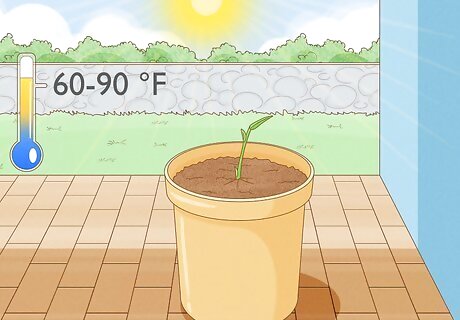
Place the pot in a warm area without direct sunlight. To grow a healthy ginger plant, you want to keep the pot in a warm area of your home. Place it in a spot that gets bright, direct sun. However, avoid areas with a great deal of direct sunlight because sun exposure can turn the ginger green. The ideal temperature for the area where you keep the ginger plant is 60 to 90 degrees Fahrenheit (16 to 32 degrees Celsius). Make sure that temperature is maintained even overnight.
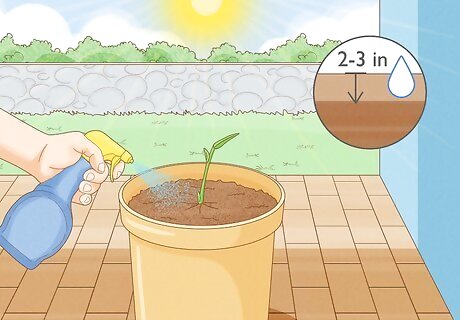
Mist the soil with water to keep it moist. It’s important not to overwater the ginger as it grows, but its soil needs to remain moist. Fill a spray bottle with water, and lightly mist the soil daily. If you prefer, you can lightly water the soil with a watering can twice a week instead of misting it daily. Allow the soil to dry out between waterings. Once you water it, make sure that the soil dries out about 1–2 in (2.5–5.1 cm) down in a small pot or 2–3 in (51–76 mm) in a larger pot before you water it again.
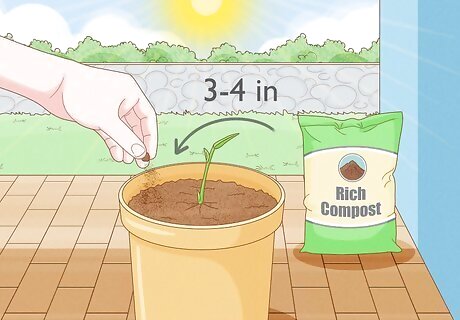
Add rich compost monthly. To ensure that the roots are kept warm and protect the plant from sun exposure, you should mix some rich compost into the pot regularly. Sprinkle 3- to 4-inches (8- to 10-cm) over the top of the soil once a month. You can purchase compost from your local garden supply center or home improvement store. Look for compost that's identified as multipurpose or potting compost. Those are typically the best options for potted plants.
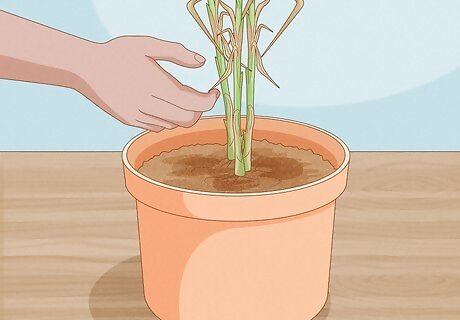
Keep an eye out for signs that your ginger plant is in trouble. When a ginger plant doesn't receive the proper amount of water and sunlight, it will show signs that it isn't healthy. Pay attention to the color and texture of the plant's leaves, so you can correct issues as soon as they occur. If the plant's leaves become yellow, it's usually a sign that you're overwatering it or the soil isn't draining properly. Cut back on how often you water the plant and check the pot's drainage holes to ensure that they're not blocked. If the leaves begin to look dry or scorched, it usually indicates that the plant is receiving too much direct sunlight. Move the plant to an area where it doesn't receive direct sunlight and prune away the affected leaves. If the leaves develop brown tips, it's usually a sign that you're applying too much compost or fertilizer. Only apply compost once a month.
Harvesting the Ginger
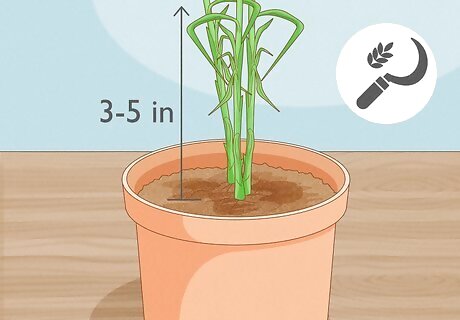
Wait until the plant has been growing for several months. Ginger grows fairly slowly compared to other herbs. Two to three weeks after planting, you should start to see shoots coming up through the soil, but it won’t be ready for harvesting until three to four months after the shoots emerge. You can usually tell that the ginger is ready to harvest when the stems above the soil are approximately 3- to 5-inches (8- to 13-cm) tall.
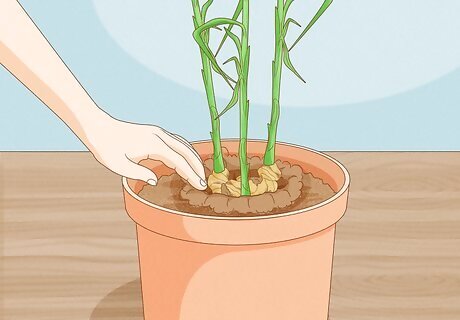
Push the soil aside to find some ginger rhizomes and cut some off. When you’re ready to harvest, use your fingers to push some of the soil aside at the edge of the pot. Find a ginger rhizome, which is the underground part of the root that grows continuously, and use a small knife to cut off a piece of the ginger.
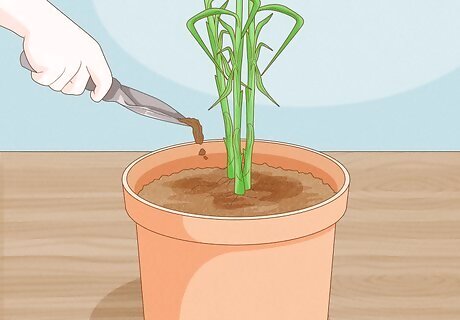
Recover the rhizomes with soil. After you’ve finished cutting off some of the ginger, replace the rhizomes in the soil. Make sure that they’re fully covered with soil so they’ll continue to grow. Continue misting the soil with water daily and adding compost to the pot monthly to keep the plant growing.













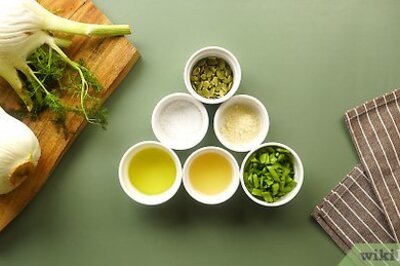
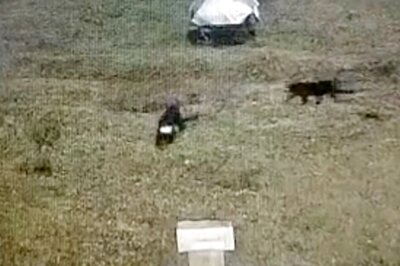





Comments
0 comment